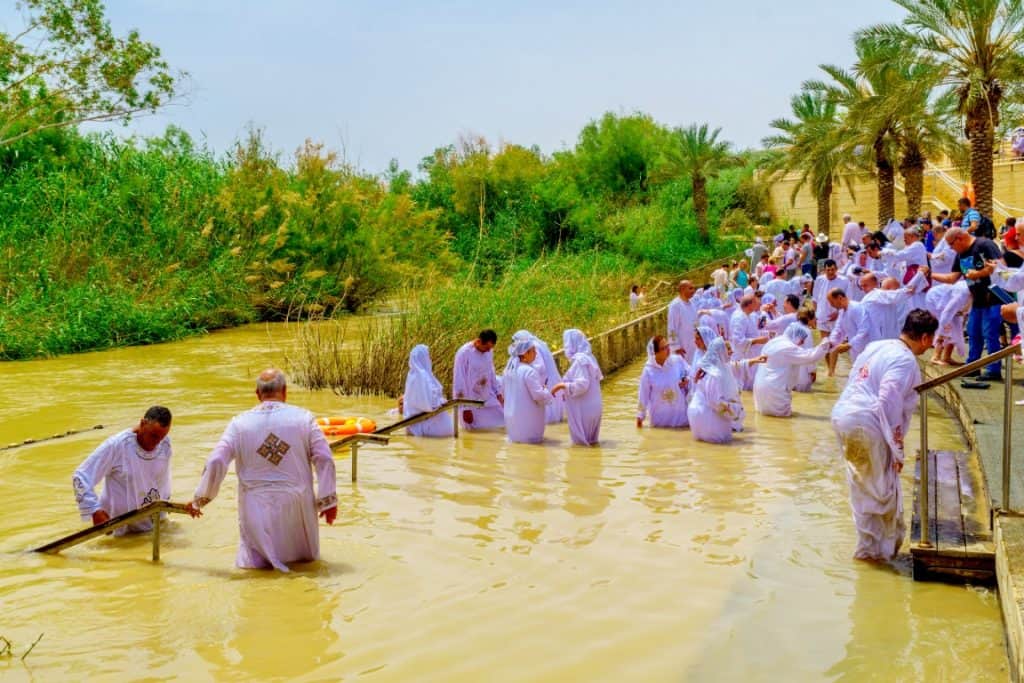Deir Hajla is the Arabic name of the Greek Orthodox Monastery of Saint Gerasimus. The Monastery is located in the Judean Desert; just north of the Dead Sea. The monastery is dedicated to St. Gerasimus. According to tradition; established the Laura (a center for solitary monks) in the Byzantine period. Deir Hajla Monastery is located in a green and well-kept grove, with two shaded resting areas. It is built two stories high around a courtyard, which is paved with stone slabs and has a water cistern in the center. On the first floor are the monastery’s kitchen and dining room; as well as a small prayer chapel and souvenir stalls; where you can also purchase relics and shrouds for burial. The Great Church and the living rooms of the monks are located on the second floor. Adjacent to the monastery is a hostel, used by Greek pilgrims visiting the place.

Traditions Regarding Deir Hajla Monastery
So the name of the monastery preserves the name of the biblical settlement “Beth Hoglah”. In fact, it is mentioned in the book of Joshua (15: 6) as the easternmost border point between the tribe of Judah and the tribe of Benjamin. Also, the Jewish tradition points to this area in the north of the Dead Sea as the place where Joshua crossed the Jordan. Ans also from where he continued to conquer nearby Jericho. Furthermore, the nearby Elisha spring is connected to another Jewish tradition. According to which Elijah the Prophet ascended to heaven before Elisha his successor.

Christian tradition identifies the place as one of the locations where Miriam, Joseph, and Jesus stopped to spend the night on their way to Egypt while fleeing from King Herod. Another important Christian tradition points to the place as the site of the Baptism of Jesus in Jordan by John the Baptist. which was performed at Bethany. In fact, every January, the Feast of the Epiphany is celebrated in the monastery, during which ceremonies and processions are held on the banks of the Jordan.
Some More About Deir Hajla Monastery
So the monastery was originally founded in the fifth century CE by the Church’s father Saint Jerome and was run by the monk Gerasimus. But in 614 CE the place was destroyed by the Persians, who invaded Israel and damaged many Christian sites. After the conquest of the land by the Arabs in 640 CE; the monastery was restored, but seems to have been destroyed and rebuilt several times over the centuries.
Qasr Al-Yahud

So the existing structure today is Crusader; as evidenced by the shape of the cloister and the ceiling of the cross arches; which are typical of Crusader construction in the Land of Israel. However, many parts of the structure are restorations and additions to the original Crusader structure; which has been damaged over the years mainly by earthquakes. The last extensive renovation was carried out in 1890 by the Greek Orthodox Patriarchate; following severe damage suffered by the building in an earthquake that occurred in 1837.
A Little About Saint Gerasimus’ Laura
The beginning of Christian activity in the place was, as mentioned, with the establishment of a Byzantine monastery; which was run by the monk Gerasimus. He was one of the leaders of the Christian monks in the Judean Desert and the Jericho area in the Byzantine period; and the author of the Regula (Regulations of the Judean Desert Monasteries); which binds the eastern monks to the present day. Most of Gerasimus’ fame was as a miracle doer, and he was considered the patron over the animals.
According to tradition, Gerasimus came across a wounded lion in the desert, with a thorn stuck in his leg. He pulled out the thorn and cared for the lion until he cured the lion. Following this, the lion accompanied him everywhere and guarded him against all evil. When Gerasimus died, the lion lay on his grave and refused to eat and drink until he died.
Monastery of the Tempatation

On my private tours of the Judaean Desert and the Dead Sea gladly I will take you there! In fact, you can still see in Deir Hajla Monastery the bones of these Byzantine monks that died when the Persians invaded the land. So don’t hesitate and please get in touch! I would gladly craft the ultimate tour for you!

